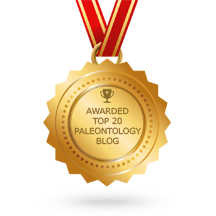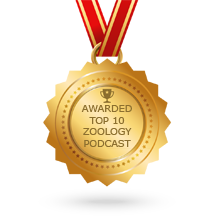Browsing the "Mesozoic" Category
The Mesozoic era, meaning “middle life”, is a division of earth’s history spanning from around 252 to 66 million years ago. It is subdivided into the Triassic, Jurassic and Cretaceous periods. The beginning of the Mesozoic is characterised by a long phase of recovery following the end Permian mass extinction. The end of the Mesozoic is marked by the Cretaceous/Paleogene extinction event which wiped out the dinosaurs among other groups.

Published on August 21st, 2017 | by Chris Barker
My friends know me as a theropod fanboy, which should come to no surprise, as I am a massive cliché of a palaeontologist (unashamedly so, as theropods are beyond cool). However, give me a weird archosauromorph [&hellip... Read More →

Published on August 4th, 2017 | by Chris Barker
Biology is full of exciting avenues, and some of the finest, in my opinion, are the morphological and behavioural adaptations that define the split seconds whether an animal lives or dies, eats or starves. Predator-prey interactions [&hellip... Read More →

Published on July 30th, 2017 | by Chris Barker
Titanosaurs include some of the largest terrestrial organisms to walk the Earth: globally distributed, multi-tonne behemoths representing the last of the sauropods at the end Cretaceous extinction event. Much about their biology is known, ranging from [&hellip... Read More →

Published on July 29th, 2017 | by Chris Barker
The Late Cretaceous rocks of Ganzhou, China, are rife with oviraptorids. We have seen these strange theropods before here at Palaeocast, when we looked at the very high temperatures at which they incubated their eggs. The [&hellip... Read More →

Published on July 18th, 2017 | by Guest Blogger
“Must go faster!” yells Dr Ian Malcolm, as his mangled, yet rather toned, body was hauled away in the Jurassic Park jeep, his lovely hair swaying in the wind as they fled from the Tyrannosaur paddock, [&hellip... Read More →

Published on July 7th, 2017 | by Guest Blogger
Implications for Dinosaur Nesting Behaviour and Thermophysiology Oviraptorosaurs had received a pretty bad reputation when they first popped onto the scene. Initially, palaeontologists branded these creatures as “egg plunderers”, due to the discovery of an individual, [&hellip... Read More →

Published on June 30th, 2017 | by Liz Martin-Silverstone
When thinking of palaeontology in Asia, most people think of Mongolia and China, but there is actually a significant palaeontology community in Japan. Japan has many fossils, starting in the Ordovician, and ranging from everything from [&hellip... Read More →

Published on June 26th, 2017 | by Guest Blogger
With advancements in computed tomography (CT) scanning comes an increased understanding of the internal structures preserved in extant and extinct animals, providing a non-destructive way of peering into the bones and revealing their secrets. Along with [&hellip... Read More →

Published on June 18th, 2017 | by Guest Blogger
Articles on dinosaur neurovasculature are like buses: you wait for most of the Phanerozoic for one to arrive and then two appear at once. Indeed, 2017 saw the publication of two articles relating to the purpose [&hellip... Read More →

Published on June 17th, 2017 | by David Marshall
A new species of Cyclotosaur, a giant salamander-like amphibian, has been described from the Late Triassic rocks of East Greenland. Cyclotosaurs are temnospondyl amphibians, known from other Late Triassic deposits in Germany, Poland and Svalbard, but [&hellip... Read More →






















